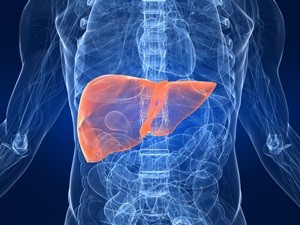“Healthy” Kids’ Foods Usually Aren’t
Packaging on food can often be deceiving, especially when it comes to those marketed towards children. Many food packaging claims that its food is healthy and nutritious, when in fact, it is not. Americans spend $168 billion a year on obesity-related health care costs. Yet, another study has found the front-of-package labels on processed food items to be misleading, according to a recent article from the Los Angeles Times, written by Karen Kaplan.
This new report came out last week from the Prevention Institute and focuses on the claims made on certain cereals, meals, beverages and snacks marketed to children. Researchers focused on 58 products deemed healthy by an industry group and that also made nutritional claims on front-of-package labels, including Campbell’s Tomato Soup, Skippy Super Chunk Peanut Butter and Rice Krispies.
The Nutrition facts panel was examined by researchers to determine how much sodium and fiber they contained, and to calculate the percentage of total calories that came from sugar, fat and saturated fat. This was then measured up to nutrient criteria derived from the federal government’s Dietary Guidelines for Americans. In order to qualify as healthy, foods had to:
• Derive less than 35 percent of their total calories from fat (exceptions were made for nuts, nut butters and seeds) and less than 10 percent from saturated fat;
• Get less than 25 percent of their total calories from sugar;
• Contain at least 1.25 grams of fiber per serving (exceptions were made for milk products and 100 percent fruit juices);
• Contain less than 480 milligrams per serving of sodium (for snacks) or less than 600 mg per serving of sodium (for meals).
Of the 58 items researched, 49 of those failed to meet the criteria and were deemed “unhealthy” by the Prevention Institute researchers. This included the tomato soup, peanut butter and Rice Krispies.
Also included in the findings:
• 95 percent of all products in the study contained added sugars, including high fructose corn syrup and healthy-sounding alternatives like honey and fruit juice concentrate.
• 17 percent of the items contained “no whole food ingredients.”
• Only one of the 58 products contained a green vegetable (peas).
These findings may be shocking for many, but it only emphasizes that we need to have more honest, less misleading food packaging. Ultimately, parents are the ones who choose what their kids eat and should be able to make the most well-informed decision possible.
-
3 Steps Gastric Bypass Patients Can Take To Avoid Calcium Deficiency
Most Americans do not get enough calcium in their diets; the average d
-
How To Lose Weight Fast Using Hypnosis To Re-Program Your Subconscious Mind!
In order to achieve a dramatic change in a person’s body, one mu
-
Snack To Stay Slim Satisfied And Healthy
If all of your hard work at the gym is foiled by your snacking habits,
-
Tips To Lose 20 Pounds
Lose 20 pounds progressively over 2 or 3 months so that you can a
-
Are You Interested In Exploring Herbal Weight Loss?
Many people struggle with weight loss and maintaining their figure, b
-
The Energy of Food: A Missing Piece in the Overeating Puzzle (VIDEO)
As a psychiatrist I know that there is more to overeating and obesi
- DON'T MISS
- Body Wraps: New Fitness And Weight Loss
- Keeping Motivated While You Are On Your Diet
- Advice on How To Get Rid Of Stomach Fat
- An Overview Of The Most Popular Weight Loss Programs
- Weight Loss – “When Fast Weight Loss Becomes Unhealthy”
- Stunning Fat Loss Secret Revealed And Why It Works So Easily!
- A Great Workout Routine: When To Work Out And how To Get ready
- Need Help Sticking To Your Weight Loss Goals? Try This Trick!
- Healthy Snacks for Those Dieting
- 12 Helpful Tips From Women Who Have Successfully Lost Weight




